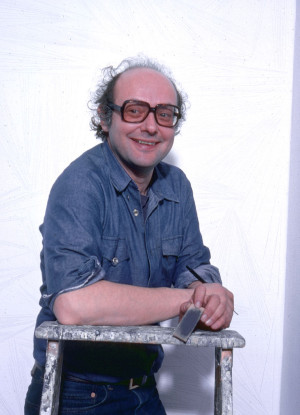American, 1928–2007
Sol LeWitt is renowned as a founding member of both Minimalism and Conceptual Art. LeWitt came to fame in the late 1960s with his wall drawings and "structures" (a term he preferred to "sculptures") but was prolific in a wide range of media including drawing, printmaking, photography, painting, installation, and artist's books. Seeking to distinguish himself from the Abstract Expressionists, LeWitt determined that the initial concept, not the finished object, was the work of art. In a series of 1967 statements that outlined parameters for Conceptual art, the artist argued, “The idea becomes a machine that makes the art.” Many of LeWitt’s two-dimentional works take the form of instructions, such as the more than 1,200 wall drawings he conceived of over the course of forty years. The instructions allow other artists and even amateurs to execute the works in different locations. LeWitt saw the wall drawings as the equivalent of musical scores that could be realized by any number of people in any location, and his instructions often allow for subtle interpretive differences.
LeWitt has held solo exhibitions at the Museum of Modern Art and the Whitney Museum of American Art in New York, the San Francisco Museum of Modern Art, the Tate Gallery in London, and the Stedelijik Museum in Amsterdam, among other venues. He has also exhibited his work at several documenta exhibitions in Kassel, Germany, and at several Venice Biennale shows.
